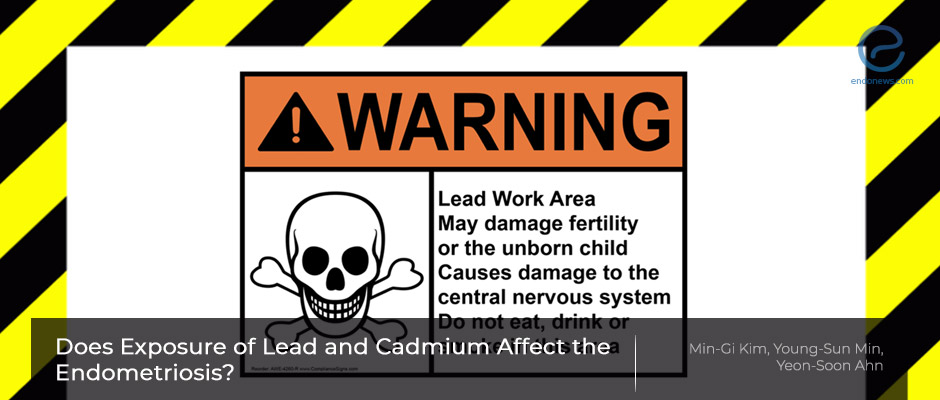Lead and cadmium exposures of female workers should be reduced as much as possible
Nov 1, 2021
Lead and cadmium exposures increase "endometriosis-related" hospital admissions
Key Points
Highlights:
- There is mounting scientific evidence on the role of endocrine-disrupting chemicals (mainly environmentally persistent chemicals like dioxin) in the induction and severity of endometriosis.
- Environmental contaminants lead and cadmium, induce oxidative damage and thereby formation of reactive oxygen species and lipid peroxidation interfering with the antioxidant defense systems.
Importance:
- Exposures to lead and cadmium have raised concerns both in the induction and severity of endometriotic lesions.
What's done here:
- Correlation of blood lead levels; lead and cadmium exposure with endometriosis in 26,542 female workers were analyzed.
- The standard admission rate and admission odds ratio for endometriosis were compared using the general population and the research cohort.
Key results:
- Lead exposure was found to be associated with admission in patients with endometriosis through a 5-year follow-up.
- Cadmium exposure itself was not statistically associated with hospital admission in patients with endometriosis.
- Lead exposure was associated with endometriosis admission.
- Co-exposure to lead and cadmium was synergistically associated with admission in patients with endometriosis.
Limitations of the study
- Only the electronic data collected through lead-associated special medical examinations, parameters related to endometriosis (menstrual cycle, family history, genetic polymorphisms, smoking, BMI,.. could not be searched.
- Although the smoking rate in the lead exposure cohort was not higher than the general population, other variables which were not examined could have influenced the outcomes.
- Only hospital admission data were used, patients who only sought outpatient care without admission were missed.
- The lack of complete information on previous exposure histories raises questions for absolute validation of the results.
Lay Summary
Min-Gi Kim and associates from Korea published their results on the possible effects of lead and cadmium exposure in endometriosis induction and severity in a recent issue of “International Journal of Environmental Research and Public Health”.
Endometriosis is an illness with multiple causal factors and there is growing evidence on endocrine-disrupting chemicals like dioxin could be involved in the induction and severity of the disease. Trace metals like cadmium, lead, copper, chromium, and mercury have been shown to possess endocrine-disrupting properties but their role in endometriosis has been inconsistent. Since 2000, lead-associated special medical examination data on exposure to occupational hazards have been electronically stored and monitored by the Korean Occupational Safety and Health Agency. A total of 26,542 female workers with at least one special medical examination for lead, from 2000 to 2004, and exposure to chemicals other than lead was classified using their work environment measurements.
Lead exposure was associated with admission in patients with endometriosis through a 5-year follow-up among lead-exposed female workers. Co-exposure to lead and cadmium was synergistically associated with admission in patients with endometriosis. Cadmium exposure itself was not statistically associated with hospital admission in patients with endometriosis. The standard admission rate and admission odds ratio for endometriosis were compared using the general population and the research cohort respectively.
The major limitations of the study are; lack of searching parameters related to endometriosis. Also, though the smoking rate in the lead exposure cohort was not higher than the general population, other variables which were not looked for could have influenced the outcomes. Only hospital admission data were used in this study here, hence the patients with outpatient care were missed. Besides, the lack of complete information on previous exposure histories prior to this research cohort formation raises another question for absolute validation of the results.
The most important message from this cohort study is that "lead and cadmium exposure of female workers should be reduced as much as possible", and "it is necessary to monitor blood lead levels and cadmium exposure indicators in the lead and cadmium co-exposed group".
Research Source: https://pubmed.ncbi.nlm.nih.gov/34501666/
environmental contaminants lead cadmium endometriosis

